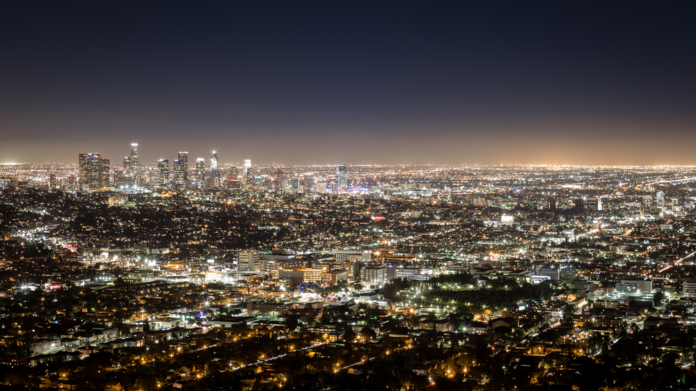[ad_1]

Light Pollution Negatively Affects Animals and Humans
From a distance, the sky glow of a large city emanates the busyness and hubbub of city life moving at break-neck speed, never truly turning in for the night. However, that sky glow is also known as dark sky light pollution. Excessive and misdirected artificial light brightens the night sky, bringing negative consequences to the well-being of humans and animals.
Light pollution affects the natural night sky, not only decreasing our ability to observe and appreciate its beauty but also disrupting wildlife and ecological systems. The circadian rhythms and melatonin production of humans and animals rely heavily on light exposure. Thus, light pollution can disrupt the sleep patterns and health of both. Nocturnal animals are also affected by dark sky light pollution, as it can cause disorientation and behavioral changes.

The Primary Cause of Light Pollution
Most light pollution is caused by commercial outdoor lighting fixtures, including street lights, billboard lights, industrial lighting, and poorly shielded outdoor fixtures. Many of these lights give off an upward light which creates an unnecessary glare. Often, light pollution is the result of poorly used or poorly installed light fixtures. As a result, many areas have implemented lighting regulations. The International Dark Sky Association was founded in 1988 and works to bring awareness to the issue of light pollution due to outdoor artificial light. As a result of the work of the association, there are now many fixtures available on the market that are Dark Sky Friendly, meaning the fixtures are fully shielded and reduce the amount of blue light emitted into the night sky.
Lessen Impact to the Night Sky with the Right Fixtures
Of course, outdoor lighting is necessary in many areas to ensure visibility and increase safety, but you can achieve adequate outdoor lighting without contributing to light pollution by choosing fixtures that reduce excess light emissions. There are several steps you can take to reduce light pollution in your area and positively impact the local nighttime environment.
The first step is carefully choosing fixtures that reduce upward-directed light. Installing cutoff wall packs is one simple way to maintain necessary outdoor lighting without contributing to sky glow. Wall packs are a common solution for lighting large outdoor areas, such as building exteriors or walkways, and traditional wall packs shine light at a near-vertical 15-30 degrees. The cutoff fixtures reduce contribution to light-polluted skies because they are designed to direct light downward, usually at a 90-degree angle. They sometimes use reflective elements and shields in combination with their cutoff design to ensure light is only projected to needed areas while preventing artificial light from spilling upward, further reducing light pollution.

Bollard fixtures, which are typically ground-anchored, lighted posts, are also available in shielded designs which reduce light pollution. They can be used to illuminate walkways and parking lot borders with directed, adjustable lights. These bollard fixtures have a louver reflector that directs light downward and is dimmable, allowing you to properly light the area without excess glare.
When shopping for light fixtures that reduce light pollution, look for Dark Sky-compliant options, such as this outdoor wall sconce fixture, which directs light downward to illuminate walkways without light spillage.
Lessen Impact with Adjustable LEDs
Aside from installing fixtures designed to reduce light pollution, properly adjusting and controlling your fixtures will make a large impact in reducing your contribution to dark sky light pollution. Using energy-efficient bulbs, adjusting the color temperature, and using tools such as dimmers and timers to control light intensity are all ways you can be proactive in controlling the fixtures you have.
Energy-efficient bulbs, particularly LEDs can help in several ways. Their inherently directional design allows them to be installed to aim light where needed, rather than projecting light outward from the center like traditional bulbs.
Additionally, the adjustable capabilities of LEDs allow them to be used as efficiently as possible, reducing excess light. Adjusting the color temperature of outdoor LED lights to a warmer setting can mimic incandescent bulbs and avoid the harsh blue light for which LEDs are known. This can reduce the risk of disrupting the sleep patterns of nearby wildlife.
Use Sensors and Control Features
Incorporating lighting with sensors and controls that further enable you to use light exactly when and how it’s needed is an effective way to reduce light pollution as well. These sensors and controls can include dimmers, timers, motion sensors, and photocell sensors. They may allow you to schedule lights to turn on and off at designated times or in response to real-time conditions.
For commercial areas, a Lighting Control Panel can enable you to set schedules and control up to 8 circuits of lighting, with options to activate lights based on a photocell sensor or via an astronomic system clock. Many fixtures, including LED security light fixtures can incorporate motion sensors to activate lights only when people are present.
Contact Us Today to See How You Can Lessen Dark Sky Light Pollution
No matter the approach to reducing dark sky light pollution, it is important to be aware of local initiatives and regulations that restrict excessive brightness and promote responsible lighting practices. With an increasing variety of tools and lighting solutions, anyone can take steps toward reducing their contribution to dark sky light pollution.
For help finding Dark-Sky Friendly lighting solutions, call 1-800-624-4488 or try our convenient “pop-up chat feature” at the bottom right corner of our 1000bulbs.com web pages.
[ad_2]
blog.1000bulbs.com










